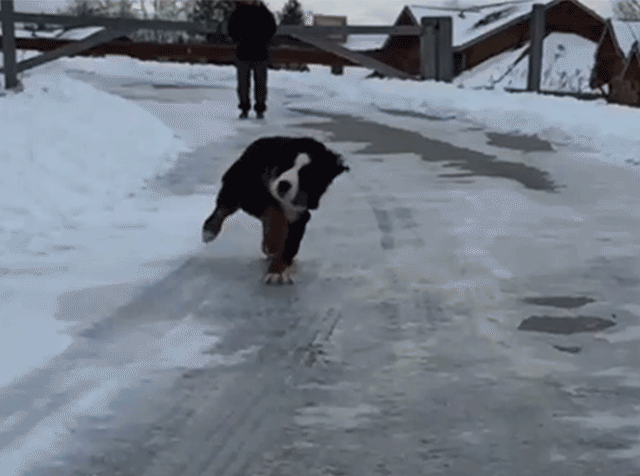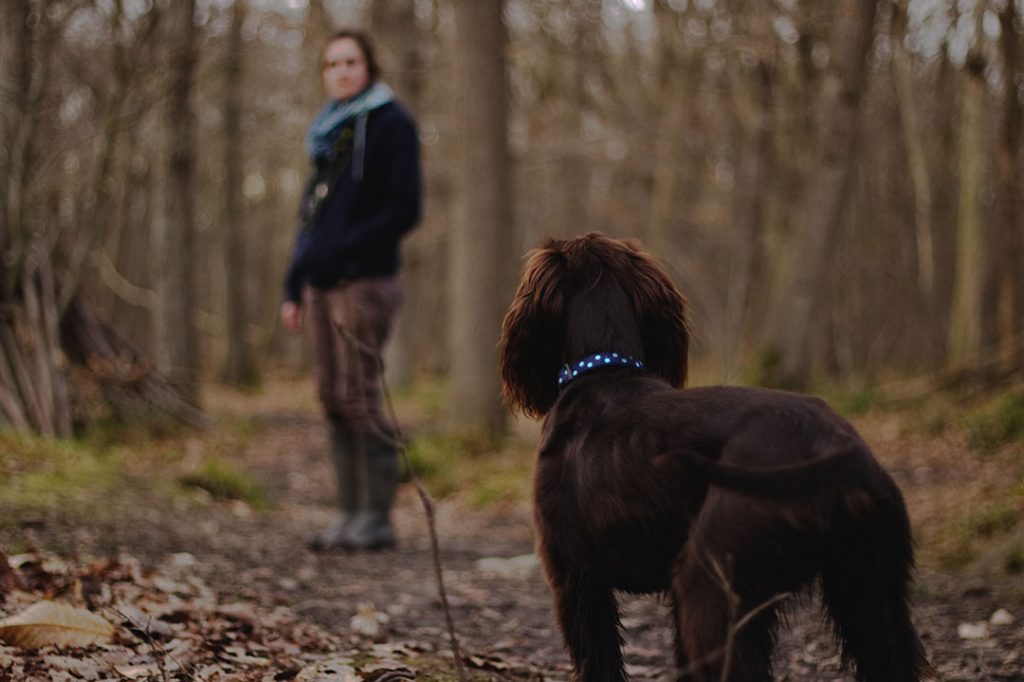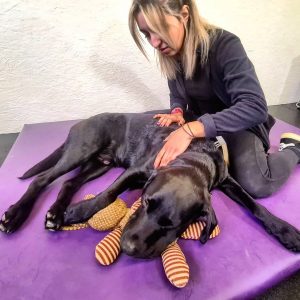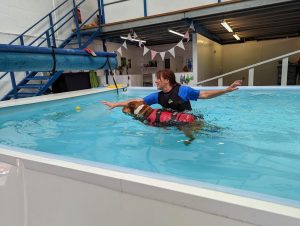It’s autumn, when the leaves are at their most colourful, when our dogs track and chase new and exciting smells, and when the daily dog walk can turn into a mud fest or skating rink.
There are some very obvious seasonal hazards but they are only obvious if we are aware of them. This time of year could present a significant burden on my dogs’ muscles and joints and as such this is the season of high risk of muscular injury, strain and sprain.
This needs to be a time for us all to stop and think about how our dogs manage to manoeuvre on muddy walks or gain purchase on low friction surfaces such as icy ground, but more importantly how we as owners can help minimise their exposure to injury.
“I can walk on mud, slippery grass and ice and I manage to keep my footing how can it be that my dog struggles”
Let’s start with us as humans. We walk as plantigrades. This means that our entire foot area is flat and our heels in the stand are in contact with the ground. This larger surface area is designed and built to withstand upright loading on the body and provides us with stability upon direct contact with the ground.
However, despite the footwear we use which offers the friction our feet would otherwise lack, we are still relatively unstable on slippery surfaces. As such, while you might not realise it, those aches and pains you feel at this time of year may well be associated with your musculoskeletal system working on overdrive to keep us vertical.
Dogs on the other hand are digitigrades. This means that they walk on their toes and in the standing position their heels don’t touch the ground which decreases the surface area available to weight bear and grip the floor. The design of a dog’s foot compliments the speed required of a prey animal. The flexibility the hock, the muscles and tendons thereon promote instantaneous spring and take off.
Imagine trying to walk on ice or run and turn on wet grass using only your bare fingertips and toes. Maintaining your balance without tensing your muscles and overcompensating would definitely pose a challenge. This is the challenge posed to your dog.

Consider this dog trying to get a grip:
How hard is he having to work to avoid significant and permanent injury?
How are his ligaments, tendons and muscles coping?
Dogs who slide on mud and ice will experience high levels of pain as the ligaments and tendons around the joints and muscles reach optimum stretch causing his supporting muscles to strain.
Slips stretch inflamed joints and tight muscles out of their normal range, and this causes small injuries to the muscles, ligaments and tendons. Injuries cause scars and scars cause stiffness and pain.
In serious cases the tendon or ligament may tear. This dogs entire body is tensing and redistributing muscular use abnormally in an effort to avoid this.
This becomes more difficult as their muscles become weaker with age and their joints are stiff and painful with arthritis.
The likelihood is that with rest this dog will appear ‘better’ in time. The reality is that he will probably learn to overcompensate on other limbs and this may present as intermittent or unresolved lameness.
Slipping Injuries
Typical injury locations
- The superficial pectorals which are across the upper chest of your dog
- The pectinous which is a small muscle located at the inner thigh which adducts the pelvic limb
- The epaxial muscles which are the group of muscles that support the back
Signals of pain
- Recurring unresolved lameness
- Slowing down or lagging behind on a walk
- Refusal to jump into the car or use stairs or ‘measuring’
- Depressed or withdrawn
- Refusal to play or go for walks
- Twitching skin
- Stiffness after exercise
- Stiffness after rest
- Laying down to eat or drink from the bowl
- Defensive, evasive or unusual aggressive behaviour can also be key indicators of pain.
- Agility dogs may have weave entry or exit issues or stutter step at jumps.
Reducing the risk of injury
Avoid encouraging your dogs to walk or especially to run on ice, slippery ground or sodden grass
If it can’t be avoided please take it slowly, for you as much as for them
If you do need to walk on gritted roads remember to wash the grit off your dogs feet
You could buy booties for them to create friction where there is none
Remember mud, ice and slippery grounds are similar to those beautiful laminate, wood and ceramic floors at home. So, what can you do around home?
Providing surfaces to create friction will allow your dog to gain purchase
Keep your dogs nails and pad fur trimmed
Offer raised bowls for food and water with a large enough mat for your dog to stand on














